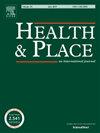Places of end-of-life care and death in health policies of four countries (EOLinPLACE Project)
IF 4.1
2区 医学
Q1 PUBLIC, ENVIRONMENTAL & OCCUPATIONAL HEALTH
引用次数: 0
Abstract
Background
Place of death and its concordance with patient preference is a key indicator for end-of-life care, studied cross-nationally and flagged as a priority by the OECD. However, it is unclear if and how ‘place’ is considered in health policy in relation to end-of-life care. This study aims to examine if and how health policies in different nations consider places of end-of-life care and death.
Methods
We conducted a comparative qualitative study across the US, the Netherlands, Portugal, and Uganda, of health policy documents following the READ (i.e., Ready materials, Extract data, Analyze data, Distill findings) systematic approach for document analysis in health policy research. Documents were analyzed using directed content analysis following Hsieh and Shannon (2005). Timelines for document publication were country-specific, based on local health policy developments relevant to end-of-life care in the last two decades. Backdates ranged from 2001 in Uganda to 2015 in the Netherlands; the most recent publication year was 2024 for all countries.
Findings
We identified 89 policy documents relevant to end-of-life care mentioning preferred or actual places of end-of-life care or death. The first topic was ‘Narratives around places’, where home was prioritized while inpatient facilities were most problematized. A second topic ‘Policy measures acting on places’ included: i) Availability of services across places, where the rural-urban divide, workforce shortages, waitlists and financial considerations challenged availability of end-of-life care across places; and ii) Professional expertise vs. community empowerment, which highlighted a key tension in the extent to which countries invest in professional expertise versus community empowerment.
Conclusions
While improving care at home is prioritized with evidence-based reasons to support it, our study shows that policymakers overlook the potential benefits of other care settings and flexible care solutions that promote continuity of care. This comparative analysis unveiled implications to improve end-of-life care across care settings.
4个国家卫生政策中临终关怀和死亡的位置(EOLinPLACE项目)。
背景:死亡地点及其与患者偏好的一致性是临终关怀的关键指标,经跨国研究并被经合组织列为优先事项。然而,尚不清楚在与临终关怀有关的卫生政策中是否以及如何考虑“地点”。本研究旨在检验不同国家的卫生政策是否以及如何考虑临终关怀和死亡的场所。方法:采用READ (Ready materials, Extract data, Analyze data, Distill findings)系统方法,对美国、荷兰、葡萄牙和乌干达的卫生政策文件进行了比较定性研究。采用Hsieh和Shannon(2005)的直接内容分析法对文献进行分析。根据过去二十年中与临终关怀有关的地方卫生政策发展,文件出版的时间表是针对具体国家制定的。从乌干达的2001年到荷兰的2015年;所有国家最近的出版年份是2024年。研究结果:我们确定了89份与临终关怀相关的政策文件,其中提到了首选或实际的临终关怀或死亡地点。第一个主题是“围绕地方的叙事”,其中家庭是优先考虑的,而住院设施则是最成问题的。第二个主题“对地方采取的政策措施”包括:i)各地服务的可用性,城乡差距,劳动力短缺,等候名单和财务考虑挑战了各地临终关怀的可用性;专业知识与社区赋权,这突出了国家在专业知识与社区赋权方面的投资程度之间的关键紧张关系。结论:虽然改善家庭护理被优先考虑,并有证据支持,但我们的研究表明,政策制定者忽视了其他护理环境和灵活的护理解决方案的潜在好处,这些解决方案可以促进护理的连续性。这一比较分析揭示了在护理环境中改善临终关怀的意义。
本文章由计算机程序翻译,如有差异,请以英文原文为准。
求助全文
约1分钟内获得全文
求助全文
来源期刊

Health & Place
PUBLIC, ENVIRONMENTAL & OCCUPATIONAL HEALTH-
CiteScore
7.70
自引率
6.20%
发文量
176
审稿时长
29 days
期刊介绍:
he journal is an interdisciplinary journal dedicated to the study of all aspects of health and health care in which place or location matters.
 求助内容:
求助内容: 应助结果提醒方式:
应助结果提醒方式:


